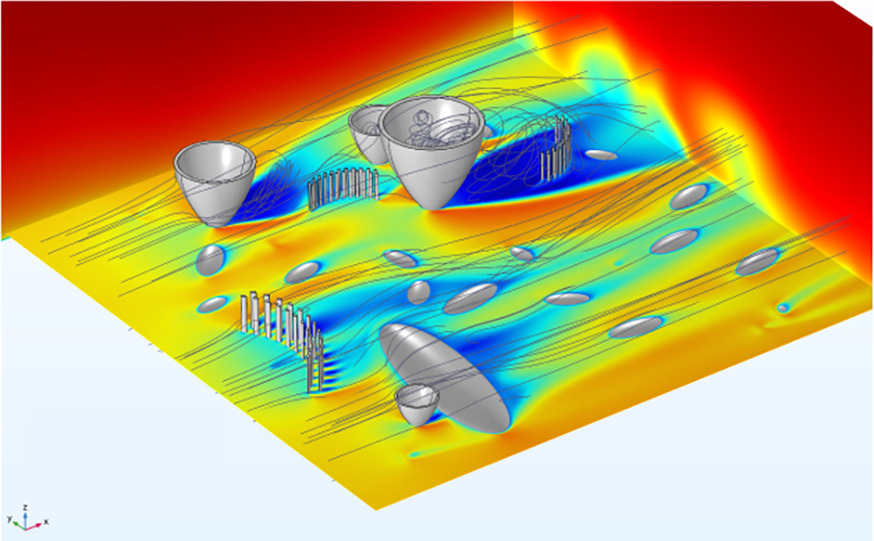
Reproductive and dispersal dynamics of early animals of the Ediacaran
Supervisor: Dr Emily Mitchell
Co-Supervisors: Professor Andrea Manica, Dr Imran Rahman
This project will use a combination of ecological analyses with computational fluid dynamics to investigate the different reproductive modes of sessile Ediacaran organisms and how these impacted their dispersal, l and abundance. Spatial point process analyses will be used to identify types of reproductive mode and reproductivity plasticity within the Avalon Ediacaran assemblage. Computational fluid dynamics will then be used to model dispersal based on the different reproductive modes found. This work will be used to investigate dispersal distributions for small to medium and large timescales, and to see if reproductive strategies relate to relative abundances through deep-time.
Type of work
The student will have access to an extensive photographic and laser-scan dataset of Ediacaran communities. They will use these data alongside the results of existing analyses to document the different reproductive modes within Ediacaran communities. This information will be used to parameterise different types of models, and explore how changing variables, such as the proportion of sexual to asexual reproduction, or the extent of waterborne propagation impacts dispersal using computational fluid dynamics.
Importance of the area of research concerned
Life has existed on Earth for more than 3.5 billion years, but it is only from around 600 million years ago, during the Ediacaran time period (635–539 Ma), that animals appear in the rock record. At this time, animals evolved some of their most important traits, most obviously large body-size, but also tissue-differentiation, mobility, bilateral symmetry and ecosystem engineering (reef-building). Over the past ten years, mathematical ecological approaches have demonstrated how previously elusive biological details can be extracted from the Ediacaran fossil record. This project will tap into the exceptionally rich biological information captured in the Ediacaran fossil record and use computational fluid dynamics and quantitative ecological approaches to investigate how different reproductive modes influenced the dispersal of early animals.
References
Mitchell, E. G., Kenchington, C. G., Liu, A. G., Matthews, J. J., & Butterfield, N. J. (2015).
Reconstructing the reproductive mode of an Ediacaran macro-organism. Nature, 524(7565), 343. Delahooke, K.M., Liu, A.G., Stephenson, N.P. and Mitchell, E.G., 2024.
‘Conga lines’ of Ediacaran fronds: insights into the reproductive biology of early metazoans. Royal Society Open Science, 11(5), p.231601. Gutarra, S., Mitchell, E.G., Dunn, F.S., Gibson, B.M., Racicot, R.A., Darroch, S.A. and Rahman, I.A., 2024.
Ediacaran marine animal forests and the ventilation of the oceans. Current Biology, 34(11), pp.2528-2534.
